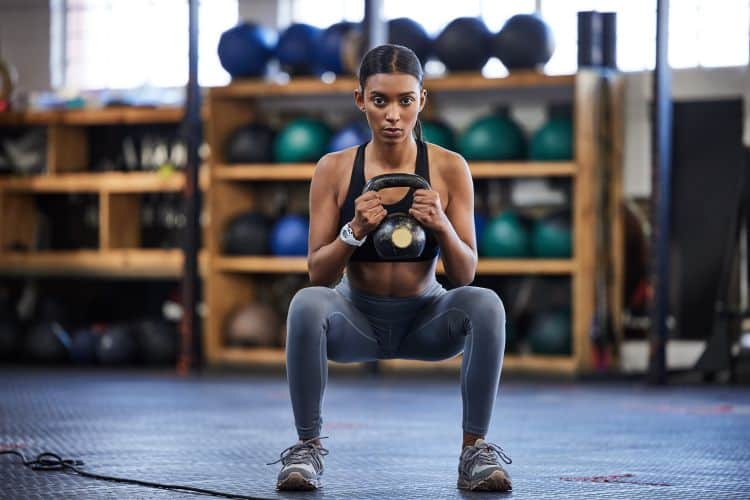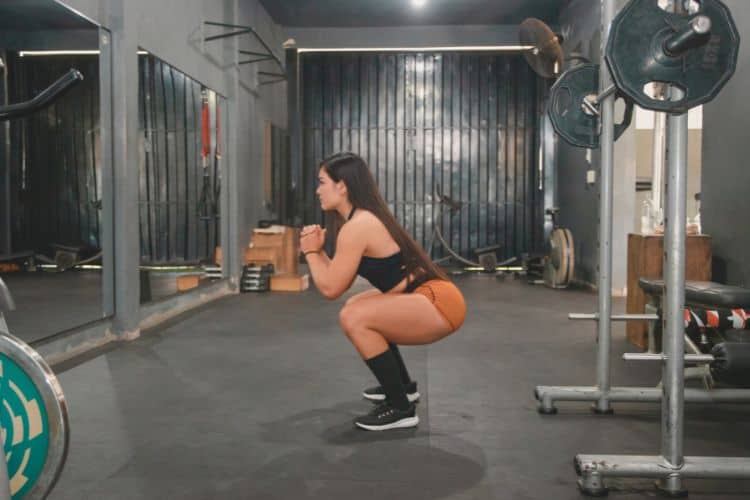Sign up for workout ideas, training advice, reviews of the latest gear and more.






When it comes to fitness, women often find themselves navigating through a sea of information, sometimes unsure of where to begin or what exercises will yield the best results. While there are numerous workout routines and equipment options available, one tool that stands out as incredibly effective for women is the barbell. Don’t be intimidated by this seemingly masculine piece of equipment; barbell exercises can empower women to build strength, sculpt their bodies, and boost their confidence. In this blog post, we’ll delve into the world of barbell exercises for women, exploring their benefits, safety considerations, and a selection of powerful exercises to incorporate into your fitness routine.
One of the primary benefits of incorporating barbell exercises into your workout routine is the ability to build lean muscle mass. Contrary to the misconception that lifting heavy weights will lead to bulky muscles, barbell exercises can actually help women develop a toned and sculpted physique. When you lift weights, you stimulate muscle growth, which in turn increases your resting metabolic rate. This means you’ll burn more calories throughout the day, helping to achieve and maintain a healthy weight.
Osteoporosis is a common concern for women, particularly as they age. Barbell exercises are an excellent way to strengthen bones and reduce the risk of osteoporosis. Weight-bearing activities like squats, deadlifts, and overhead presses put stress on the bones, which encourages the body to build stronger, denser bones. This can be especially beneficial for women approaching or going through menopause, as hormonal changes can lead to bone density loss.
Functional fitness refers to the ability to perform everyday activities with ease and efficiency. Barbell exercises mimic many real-world movements, making them incredibly functional. Whether you’re lifting groceries, carrying your child, or simply getting out of a chair, the strength gained from barbell exercises will improve your overall functionality and make daily tasks easier.
As women see improvements in their strength and physical appearance, their self-confidence tends to soar. Barbell training challenges you both mentally and physically, and as you achieve new milestones, you’ll develop a sense of empowerment and accomplishment. This newfound confidence often extends beyond the gym, positively impacting various aspects of your life.
Before diving into a barbell training program, it’s crucial to consider safety precautions to ensure a productive and injury-free experience.
Executing exercises with correct form is paramount to avoid injuries. Consider working with a qualified personal trainer, at least initially, to learn proper technique for various barbell exercises. Pay attention to your posture, grip, and range of motion, and always prioritize form over lifting heavy weights.
It’s essential to choose the right weight for your fitness level. Beginning with a weight that is too heavy can lead to injuries, while a weight that is too light may not provide the necessary challenge for muscle growth. Start with a weight that allows you to perform exercises with good form for the recommended number of repetitions.
Before engaging in barbell exercises, perform a thorough warm-up to prepare your muscles and joints for the workout. Afterward, incorporate a cool-down routine to stretch and relax your muscles. Proper warm-up and cool-down practices can prevent injuries and enhance recovery.
Listen to your body’s signals and avoid pushing yourself to the point of pain or discomfort. Soreness is normal, but sharp or intense pain should not be ignored. Rest when needed, and don’t hesitate to modify exercises if they cause pain or strain.
Now that we’ve covered the benefits and safety considerations, let’s explore some effective barbell exercises that women can incorporate into their fitness routines. These exercises target various muscle groups and can help you achieve a well-rounded and strong physique.
Target Muscles: Quadriceps, Hamstrings, Glutes, Core
The barbell squat is a compound exercise that engages multiple muscle groups. To perform it, stand with your feet shoulder-width apart and the barbell resting on your upper back. Lower your body by bending at the hips and knees, keeping your chest up and back straight. Descend until your thighs are parallel to the ground or lower, then push through your heels to return to the starting position.
Target Muscles: Glutes, Hamstrings, Lower Back, Traps
The deadlift is another powerful compound movement. Stand with your feet hip-width apart and the barbell in front of you. Bend at the hips and knees to reach down and grasp the barbell with an overhand grip. Keep your back straight, chest up, and core engaged as you lift the bar by straightening your hips and knees. Lower the barbell back to the ground with controlled movement.
Target Muscles: Chest, Shoulders, Triceps
The bench press is a classic upper-body exercise that strengthens the chest, shoulders, and triceps. Lie on a flat bench with your feet flat on the floor. Hold the barbell with a grip slightly wider than shoulder-width apart. Lower the barbell to your chest, then press it back up to the starting position. Make sure to keep your back, head, and buttocks firmly on the bench during the exercise.
Target Muscles: Upper Back, Biceps
Barbell rows are excellent for developing the muscles of the upper back and improving posture. Stand with your feet hip-width apart and hold the barbell with a shoulder-width grip. Bend your knees slightly and hinge at your hips to lean forward. Keep your back straight as you pull the barbell toward your lower ribcage, squeezing your shoulder blades together. Lower the barbell back to the starting position with control.
Target Muscles: Shoulders, Triceps
The overhead press is a fantastic exercise for building strong shoulders. Stand with your feet hip-width apart and hold the barbell at shoulder height with your palms facing forward. Press the barbell overhead by extending your arms. Keep your core engaged and avoid leaning backward. Lower the barbell back to shoulder height with control.
Target Muscles: Hamstrings, Glutes, Lower Back
The Romanian deadlift is a variation of the traditional deadlift that emphasizes the hamstrings and glutes. Stand with your feet hip-width apart and hold the barbell in front of your thighs with a shoulder-width grip. Keeping your back straight and knees slightly bent, hinge at the hips to lower the barbell towards the ground while maintaining a slight bend in your knees. When you feel a stretch in your hamstrings, reverse the movement and return to the upright position.
To get you started on your barbell journey, here’s a sample workout routine that incorporates the exercises mentioned above. Remember to warm up before beginning and cool down afterward to optimize your workout.
Day 1: Lower Body Focus Barbell Exercises
2: Upper Body Focus
3: Active Recovery or Rest
Engage in light, low-impact activities such as walking, swimming, or yoga to promote recovery and reduce muscle soreness.
4: Total Body Workout Barbell Exercises
5: Rest
Allow your body to recover and repair.
6: Repeat Day 1
7: Rest or Active Recovery
Modify the routine to fit your schedule and fitness level, gradually increasing weights and repetitions as you progress. Always prioritize rest and recovery days to prevent overtraining.
Barbell exercises for women are a potent tool for building strength, confidence, and overall fitness. When integrated into a well-balanced workout routine, they can help you achieve your fitness goals and enhance your quality of life. Remember to prioritize safety by focusing on proper form, using appropriate weights, and listening to your body. With dedication and consistency, you’ll unlock the incredible benefits that barbell training has to offer, allowing you to become the strongest and most confident version of yourself.
Stay up to date on the latest women’s health, fitness and lifestyle trends and tips.